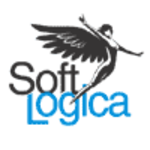Description

StormForge

LoadNinja
Comprehensive Overview: StormForge vs LoadNinja
StormForge
a) Primary Functions and Target Markets
StormForge is a performance-testing and optimization platform specifically designed for Kubernetes environments. Its primary function is to automate the process of performance testing, analysis, and optimization for applications running on Kubernetes clusters. The platform excels in experimentation-driven testing, using machine learning algorithms to fine-tune applications for optimal performance and cost efficiency.
- Target Market: Primarily targets DevOps teams, developers, and IT operations professionals who are working with Kubernetes. It is especially valuable for organizations that rely heavily on cloud-native architectures and seek to optimize their cloud resource usage while ensuring robust application performance.
b) Market Share and User Base
StormForge services a niche but growing segment of the market as Kubernetes adoption continues to rise. While it doesn't have the mass-market presence of general performance testing tools, it holds a significant position within its specialized field, gaining traction especially with mid-sized to large enterprises focused on cloud-native development.
c) Key Differentiating Factors
- Kubernetes Optimization: Unlike many other testing platforms, StormForge is deeply integrated with Kubernetes, offering capabilities tailored specifically for this ecosystem.
- Machine Learning: It uses advanced machine-learning algorithms to automate complex optimization tasks, distinguishing it from many traditional performance-testing tools.
- Cost Efficiency: Focuses on reducing cloud costs through intelligent resource optimization, in addition to performance enhancement.
LoadNinja
a) Primary Functions and Target Markets
LoadNinja is a cloud-based load testing tool designed to provide easy and quick performance testing for web applications. Its primary function is to simulate browser-based web application traffic to help developers identify performance bottlenecks before they impact end users.
- Target Market: Aimed at QA engineers, developers, and testing teams who need to conduct load testing without the overhead of script maintenance, particularly beneficial for agile development environments.
b) Market Share and User Base
LoadNinja benefits from being part of the SmartBear Software suite, which has a large and established presence in the software testing market. It is favored by small to medium businesses as well as enterprises needing efficient, scalable load-testing solutions.
c) Key Differentiating Factors
- Browser-based Testing: Unlike many load testing tools that simulate network requests, LoadNinja tests from the browser level, providing more accurate, real-world performance insights.
- Record and Playback: Users can record test scenarios by simply interacting with their web applications and then use these recordings for load testing, reducing the need for scripting.
- Integration with CI/CD: Offers seamless integration with continuous integration and delivery pipelines, supporting automated testing routines.
testomat.io
a) Primary Functions and Target Markets
testomat.io is a test management platform designed for streamlining test management processes across development and QA teams. It focuses on integrating into existing development workflows to enhance collaboration and efficiency in test execution, reporting, and analysis.
- Target Market: Testomat.io is targeted at software development teams prioritizing test management and looking for a robust tool to manage test cases, execution, and results across projects.
b) Market Share and User Base
As a more specialized tool focusing on test management, testomat.io serves a growing segment of the market focused on agile and DevOps practices. It is favored by teams that require advanced test organization capabilities.
c) Key Differentiating Factors
- Customization and Flexibility: Offers highly customizable test plans and workflows that fit into diverse project needs and methodologies.
- Integration and Collaboration: Emphasizes integration with popular development tools and platforms, fostering better communication between cross-functional teams.
- Real-time Reporting: Provides dynamic and comprehensive reporting and analytics, giving teams immediate insight into test results and application quality.
Comparative Analysis
- Functionality: StormForge leads in Kubernetes-specific optimization, while LoadNinja is more focused on web application load testing. Testomat.io is distinct in its focus on managing the test process rather than testing itself.
- Market Focus: StormForge is aligned with cloud-native environments and Kubernetes-specific use cases. LoadNinja is broadly applicable across web development teams, and testomat.io is essential for teams needing structured test management.
- Integration & Ease of Use: LoadNinja's ease of use through browser-based testing and record/playback capabilities sets it apart, while testomat.io's rich integration options make it ideal for collaborative environments.
- Technological Differentiation: StormForge's use of machine learning for performance tuning is a significant tech differentiator compared to others focusing on traditional testing methods.
Contact Info

Year founded :
2015
+1 617-209-3159
Not Available
United States
http://www.linkedin.com/company/stormforge

Year founded :
Not Available
+1 617-684-2600
Not Available
United States
Not Available
Feature Similarity Breakdown: StormForge, LoadNinja
When comparing StormForge, LoadNinja, and testomat.io, it's important to identify their core features, user interfaces, and unique attributes. These three tools are involved in different but sometimes overlapping aspects of software testing and optimization. Let's break down each category:
a) Core Features in Common
-
Performance Testing:
- StormForge: Focused on application performance and resource optimization through machine learning.
- LoadNinja: Specializes in automated load testing for web applications, allowing users to simulate large virtual user loads.
- testomat.io: Primarily a test management tool, it supports the organization and execution of various types of tests but does not directly offer load testing like LoadNinja.
-
Integration Capabilities:
- All three platforms support integration with CI/CD pipelines and various automation tools, albeit with varying levels of focus and compatibility with different frameworks and software environments.
-
Collaboration Tools:
- They all offer ways for teams to collaborate, though the extent and style vary, with testomat.io focusing more on test management collaboration.
-
Cloud-Based Architecture:
- Each tool is available as a cloud-based solution, allowing teams to access features without a heavy on-premise infrastructure.
b) User Interface Comparison
-
StormForge:
- UI is designed for simplicity and efficiency, emphasizing analytics and optimization insights. The interface is minimalistic but powerful, focused on allowing users to quickly access performance data and optimization opportunities.
-
LoadNinja:
- The UI offers a straightforward approach to creating and running load tests. It is user-friendly, suitable for testers without deep programming knowledge, with a focus on ease of use and real-time analytics.
-
testomat.io:
- It boasts a modern and intuitive UI, focusing heavily on organization, management, and visualization of testing processes. The design is suited for navigating large test suites efficiently.
c) Unique Features
-
StormForge:
- Machine Learning for Optimization: The standout feature of StormForge is its machine learning capabilities, which are used to automatically improve application performance and resource usage.
-
LoadNinja:
- Real Browser Testing at Scale: LoadNinja allows users to conduct load tests using real browsers, providing accurate simulation of user interactions with the application under heavy loads. This feature sets it apart in performance testing.
-
testomat.io:
- Comprehensive Test Management: While it doesn’t directly compete in load or performance testing, testomat.io excels in managing complex test suites with its high-level organization tools and integration with various testing frameworks, making it a powerful ally for test orchestration.
These tools, while having some overlapping features, cater to different core needs within the software development and testing workflows. StormForge is particularly strong in optimization, LoadNinja in performance testing at scale, and testomat.io in managing and organizing test processes.
Features

Cost Management
Advanced Performance Optimization
User-Friendly Dashboard

Efficient Load Testing
Performance Monitoring
Scalability Tools
Best Fit Use Cases: StormForge, LoadNinja
Sure, here's an overview of the best fit use cases for StormForge, LoadNinja, and testomat.io, and how they cater to different businesses, scenarios, and industry verticals:
a) StormForge
Use Cases:
- Cloud-Native Applications: StormForge is tailored for businesses leveraging Kubernetes for their cloud-native applications. Its primary strength lies in its ability to optimize application performance and resource usage.
- Performance Optimization: Companies focused on reducing cloud costs while maintaining performance can benefit greatly. StormForge uses machine learning to provide actionable insights and automatic tuning.
- DevOps and IT Operations: Ideal for organizations with a mature DevOps culture that look to automate performance and cost optimization processes.
Types of Businesses/Projects:
- Enterprise Level and SaaS Providers: Enterprises running large scale, complex Kubernetes applications.
- Tech-Forward Companies: Businesses that invest heavily in cloud infrastructure and seek advanced tools for managing this complexity.
b) LoadNinja
Use Cases:
- Web Applications Load Testing: LoadNinja is excellent for businesses needing to perform load testing on web applications to ensure they can handle expected traffic volumes.
- Rapid Test Creation: It's optimal for scenarios where quick setup and execution of load tests are required without deep technical knowledge.
- In-Browser Testing: LoadNinja offers the advantage of using real browsers, which helps in capturing more realistic test data.
Preferred Scenarios:
- QA Teams and Developers: Great for teams that need to integrate load testing into their Agile development cycles.
- Businesses Launching New Web Apps: Companies about to launch new applications can ensure reliability and performance under load.
Industries:
- E-commerce, Media, and Entertainment: Particularly beneficial for industries where site performance directly impacts user experience and revenue.
c) Testomat.io
Use Cases:
- Test Management for Agile Teams: Testomat.io is best suited for teams looking to manage their test cases and test automation efforts within an Agile workflow.
- Centralized Test Automation Management: It provides a unified platform to manage manual and automated tests, making it easier to collaborate between QA and development teams.
When to Consider:
- Organizations With Extensive Test Suites: Companies with complex test scenarios and a need for efficient test case management.
- Teams Using BDD/TDD Practices: It offers strong support for behavior-driven development (BDD) and test-driven development (TDD) practices.
Industries:
- Software Development Firms and Startups: Particularly advantageous for those heavily invested in continuous integration/continuous deployment (CI/CD) processes.
d) Industry Verticals and Company Sizes
- StormForge primarily targets medium to large enterprises with significant investments in Kubernetes infrastructure across various industries, such as tech, finance, and healthcare.
- LoadNinja is versatile across many sectors but shines in fast-paced industries like e-commerce, digital media, and any businesses that depend heavily on web application reliability.
- Testomat.io appeals to software-centric companies of all sizes, particularly those adapting Agile methodologies and needing robust test management capability, including sectors like IT, finance, and startups innovating in tech.
Each of these tools fills a unique niche, and the best choice often depends on the specific needs related to infrastructure, application type, development practices, and company size.
Pricing

Pricing Not Available

Pricing Not Available
Metrics History
Metrics History
Comparing teamSize across companies
Conclusion & Final Verdict: StormForge vs LoadNinja
When evaluating StormForge, LoadNinja, and testomat.io, it's essential to consider their unique features, pricing, ease of use, and specific use cases. Each tool has strengths and weaknesses, making them suitable for different testing needs and preferences.
a) Best Overall Value
LoadNinja offers the best overall value for most users. It combines robust performance testing capabilities with ease of use and real-browser testing, making it suitable for comprehensive application testing. LoadNinja's ability to test from multiple geographic locations using real browsers allows for a more realistic testing environment, which is crucial for modern web applications.
b) Pros and Cons
StormForge
- Pros:
- Strong focus on resource optimization, especially for Kubernetes environments.
- Integrates well with CI/CD pipelines.
- Leverages machine learning for performance tuning and predictive analyses.
- Cons:
- Can be more complex to set up and require a clearer understanding of Kubernetes.
- Limited in handling broader testing needs as compared to traditional load testing tools.
- Premium pricing may not be accessible for smaller teams.
LoadNinja
- Pros:
- Provides real-browser testing, which improves testing accuracy.
- User-friendly interface, great for testers with various skill levels.
- Supports continuous testing and CI/CD integration.
- Cons:
- Performance can be impacted if testing large-scale applications with numerous users.
- The cost may increase with extended usage due to its pricing model based on virtual users.
testomat.io
- Pros:
- Strong focus on test management and organization.
- Provides a centralized platform for team collaboration.
- Rich integration capabilities with various tools like Jira, GitHub, and Slack.
- Cons:
- Primarily a test management tool, so additional testing frameworks/tools are needed for execution.
- Can be overwhelming for small teams due to its comprehensive features.
- May require training to fully utilize its capabilities.
c) Specific Recommendations
-
For performance-centric testing with a focus on optimization and you’re using Kubernetes, consider StormForge. It is ideal for teams looking to enhance application performance and cost-efficiency in cloud-native environments.
-
For comprehensive web application testing, especially where real-user simulation is crucial, LoadNinja is an excellent choice. It is suitable for testers who want a balance between performance and usability without extensive technical overhead.
-
For teams that primarily need a robust test management system to organize and collaborate on testing efforts, testomat.io could be the best choice. It is ideal for organizations with complex requirements needing meticulous test planning and tracking.
In conclusion, the choice between StormForge, LoadNinja, and testomat.io should be guided by your team's specific needs and existing workflows. Consider the importance of features like test management, real-browser testing, and Kubernetes optimization in your decision-making process.
Add to compare
Add similar companies



